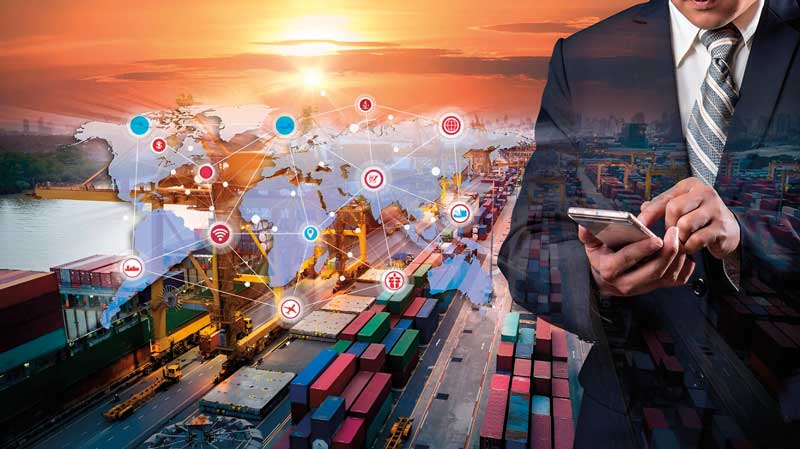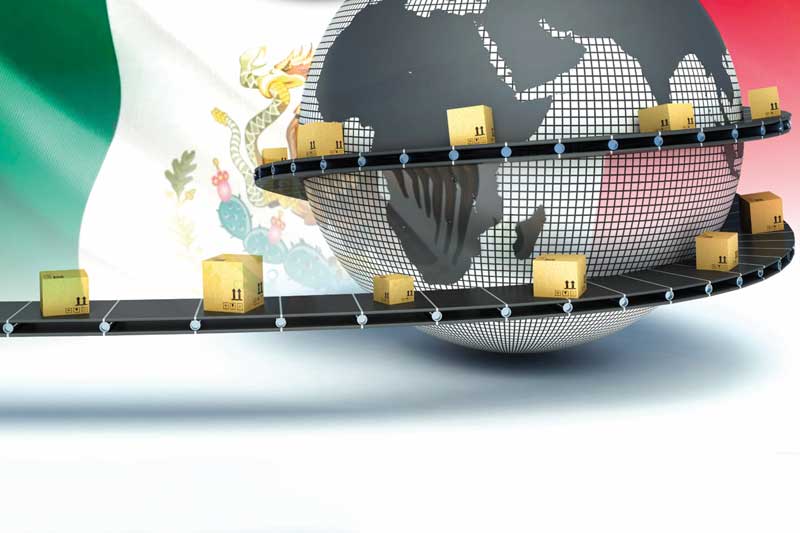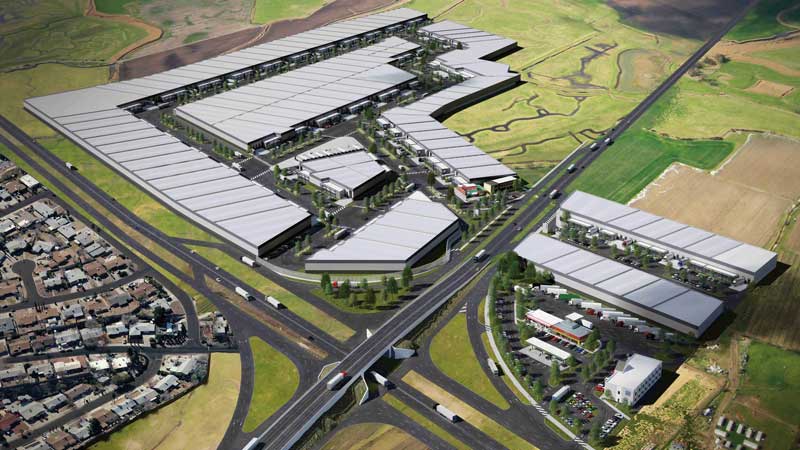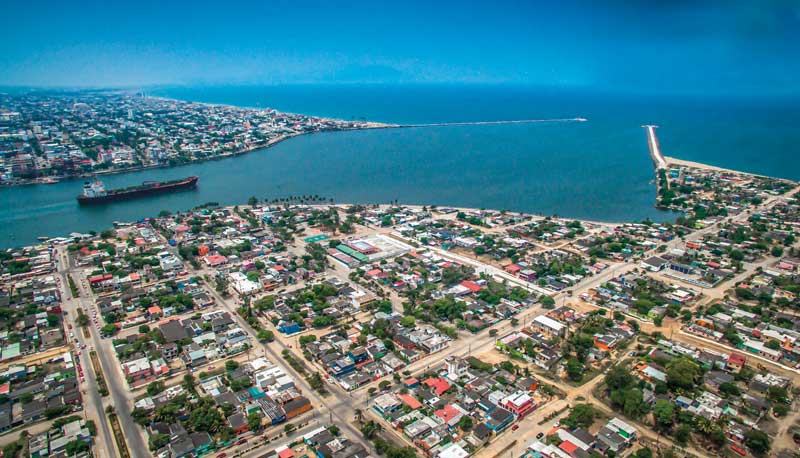The current situation of our country, together with the enormous territorial extension, the biodiversity, the climatic differences, as well as the population and cultural diversity, allows the existence of different realities, and therefore the development processes must be formulated according to this logic.
In this sense, regional development makes it possible to address an infinite number of problems, such as poverty, social backwardness, unemployment, low economic productivity, lack of economic development, lack of conservation of fauna and diverse species in many states of the Republic, lack of social and economic infrastructure, among many others, from a more efficient planning base than if they were solved at the national level.
Our country has an important experience in approaching problems from a regional development perspective, so there is an acceptance by the current administration in promoting actions so that the agencies of the three levels of government address the different problems through this approach. We can see this because policies and projects have been designed in this direction.
TOWARDS SOCIAL MANAGEMENT
It is important to move towards social management and take advantage of public policies designed to combat poverty and other problems mentioned above.
The CIIT project represents an important opportunity for social welfare and impact on regional development, since it will connect the ports of Coatzacoalcos, in Veracruz, and Salina Cruz, in Oaxaca, implying a reconfiguration of the world's economic and commercial routes. In order to achieve this objective, the project has been designed with an integral vision that includes the construction of industrial parks, the installation of technological infrastructure, housing and urban improvement, among many other investments that will be decided in the coming months.
When considering the Southeast as a whole, it becomes evident that poverty and social backwardness are closely intertwined with the evolving ethnic identities in the region. Given the significant social, cultural, and political implications, as well as the imperative of ensuring access to citizenship, there exists a complex relationship between poverty and ethnic indigenous identity. Therefore, it is imperative, from my perspective, to expand the scope of understanding and design of welfare policies formulated by the government. This is particularly important in light of the poverty measurement results obtained from Coneval.
Mexico reduced the number of poor people by 8.9 million to a total of 46.8 million, almost 16% less than the 55.7 million in 2020. The percentage of the population living in poverty will fall to 36.3% in 2022, compared to 43.9% in 2020, a decrease of 7.6 percentage points. Likewise, it warned of the persistence of inequality between north and south, the states with the highest proportion of poverty are Chiapas (67.4%), Guerrero (60.4%), Oaxaca (58.4%), Puebla (54%) and Tlaxcala (52.5%), all located in the south and center of the country. Among the indigenous population, poverty decreased from 76.6% to 65.2%, although it is almost twice as high as among the non-indigenous population, where only 33.1% are poor.
INVESTMENT AND INFRASTRUCTURE
Our country is consolidating as one of the most attractive for investment, according to figures from the Ministry of Economy, 60 billion dollars came to Mexico through foreign direct investment in 2021 and 2022, this commercial economic potential, seeks to multiply with the transisthmian train project that will connect by railways and highways the Pacific Ocean and the Atlantic Ocean. The Isthmus of Tehuantepec is an attractive and favorable region for investment due to its geostrategic location, as it connects the Gulf of Mexico and the Pacific Ocean through seaports, road and rail networks.
The rail network of this interoceanic corridor, unique in the world, consists of three lines:
- Line F, of 329 kilometers, which runs from Coatzacoalcos, Veracruz, to Palenque, Chiapas, connecting the 1,500 kilometers of the Maya Train.
- Line K, of 459 kilometers, which will connect with Central America; it runs from Ixtepec, in Oaxaca, to Ciudad Hidalgo, in Michoacán.
- Line Z, which is 308 kilometers long, runs from Coatzacoalcos, Veracruz, to Salina Cruz in Oaxaca, crossing 79 municipalities and more than 6,000 towns.
According to Sedena, 227 kilometers of roads have been rehabilitated for this project, complemented by infrastructure, urban improvement and housing works; at the end of this issue, these rehabilitation works are almost 90 percent complete.
From 2020 to 2022, more than 620 million pesos will be invested in the municipalities adjacent to the Zeta section, 82 bridges will be built and nearly 300 drainage works will be carried out; in the year just ended, 137 million pesos were invested in nearly 200 projects for the integral improvement of neighborhoods, improvement and legal security, urban planning and land management, community works of various types, generating more than 7,500 jobs.
The CIIT also provides for the construction of nine industrial parks or welfare centers, four of which will operate in a mixed industrial and wind energy mode with access to services such as fiber optics, potable water, electricity and natural gas. An interoceanic fiber optic network will be installed to provide digital services to the development poles, communities and train stations; in addition, it has already been announced that there will be tax incentives for companies that invest in the industrial parks in the area, each of which is composed of 300 hectares.
The case of the Americas is unique as it spans from the northern hemisphere to the southern hemisphere. Hence, the importance of the Isthmus of Tehuantepec, characterized by the confluence of two transoceanic bodies of water. This region boasts a rich biodiversity, evident not only in terrestrial species but also in aquatic life and some of the world's most important mines. Furthermore, the area offers a diverse range of food products, with states such as Oaxaca, Veracruz, Chiapas, and Tabasco producing rice, chili, a wide variety of fruits and vegetables, as well as cattle, pork, and honey.
IMPROVEMENT OF LIVING CONDITIONS
The proposed link with the Isthmus aims to improve living conditions and also considers an important aspect, which is democratic economic participation. This aspect is crucial because the population has been participating in surveys conducted in the area since 2019.
Currently, we find ourselves in a very particular economic moment, and what is being promoted now is a strategy of internal articulation focused on promoting import substitution at both the national and continental levels. This is because of the role that China is playing and the trade relations it continues to promote, which require the project to integrate this continent through the Isthmus of Tehuantepec. Beyond the economic planning involving the aforementioned railway infrastructure, the promotion of ports, airports, and road rescue, what will motivate is the connectivity and the provision of services within the framework of this formation of a sort of global network.
While it is a project led by the State, its ultimate goal is not profit maximization, but rather the integration of different economic sectors. Hence, as part of the Interoceanic Corridor, the promotion of the foundations of a social and solidarity economy is also considered, one that rescues the identity and pride of preserving the cultural zone found in Oaxaca, Veracruz, Tabasco, and Chiapas, which have significant cultural richness.
All this development around the Isthmus of Tehuantepec, the industrial reconversion that contemplates the use and management of lithium and the Mayan train, is leading the country to an economic reconfiguration. When there is a connection of territories, there is a very special phenomenon of the economy that becomes an accelerator and multiplier of investments in the region. Not only is employment generated by public and private investments, but also socio-economic growth and strengthening is projected, based on the promotion of port services and all the economic spillovers that are projected to be left in terms of services and production, because as mentioned above, it is a territory rich in biodiversity, agricultural and livestock products, and there is also an important manufacturing industry, the promotion of refineries, pharmaceutical industry, bottling plants, among others.
ECONOMY AND WELFARE
Based on the above, it can be stated that the jobs could have a relevant social feasibility because they seek to strengthen the communities socially and economically, respecting the preservation of the deep cultural roots of the region, therefore the promotion of the community and cooperative sector is interesting, the social and solidarity economy projects that are starting up; in the current context there are many conditions that must be met at the same time, but now we see that there is a political will and a series of actions that support this fact.
However, in view of the presidential succession, there are a number of conditions that must be met in order to guarantee the achievement of the goals that have been set, especially those that promote respect for the identity of the peoples.
A kind of economic democracy is emerging, which must continue to be strengthened and promoted within the communities, a though there are consultations and assemblies, this is a region that has been abandoned for years and even centuries of backwardness, resulting in conditions of poverty. However, these are highly participatory peoples and the awareness of the economic development that will be promoted will not be simple, it will be complex, so there is no need to turn back, on the contrary, a permanent dialogue must continue with the aim of making the people aware of the importance of their participation in economic decisions.
Finally, we can conclude that although there is a budget for the implementation of these public policies in the area of economic development, we should continue to promote democratic participation in economic matters and continue with the participation of the different economic sectors, since it is the State that directs the economic planning project with a view to a more equitable distribution of income.
Although private companies, which in this case are foreign given the concentration and centralization of capital, also have their participation, but for that it must be regulated and there are other economic sectors that we have already mentioned, such as the social, community and all the biodiversity that exists in these areas, so what we are trying to do is to create a new formula in which it is not one sector or another that drives development, but all this complexity and all these multiple relationships that can be generated given the different economic sectors that exist without visualizing them.
We are undoubtedly living one of the most important moments in the promotion of the Mexican economy, and if it is not carried out properly and in harmony with the communities, respecting the different cultural identities and with the proper care of all biodiversity, there is a risk that the unprecedented economic impact mentioned by President Lopez Obrador will not be generated.
*Master's degree in Sociology from the Universidad Iberoamericana and a bachelor´s degree with distinction in Education from UNAM, with studies in lobbying and political negotiation, sociology of globalization and participatory action research.
Text:Gerardo Europa, Socio Director de Grupo ICB*
Photo: salitika / GACETA UNAM / SEGOVIARQ / syt / COATZACOALCOS








